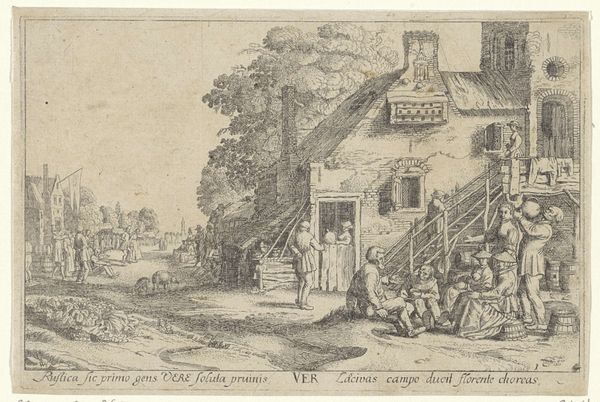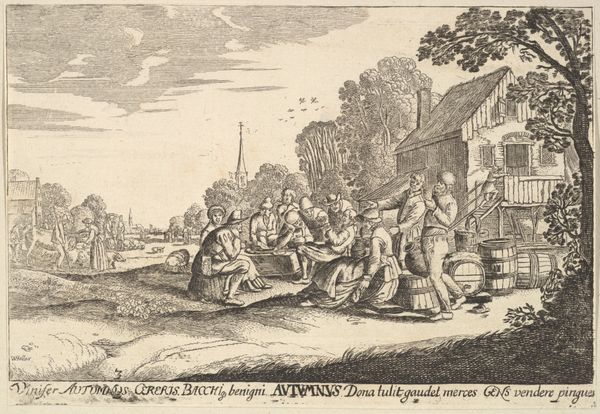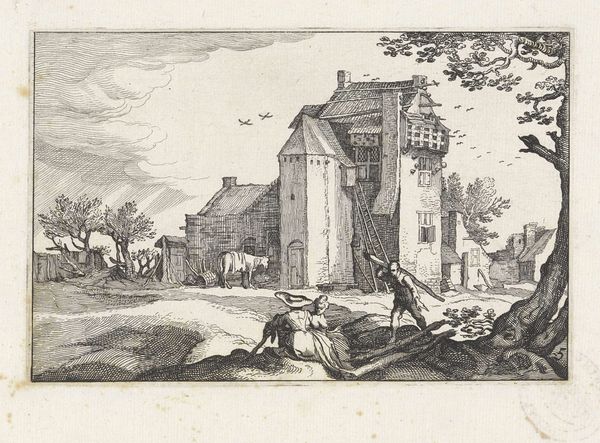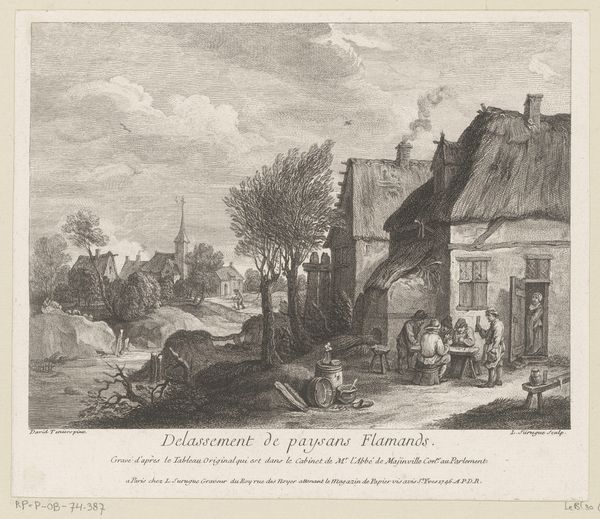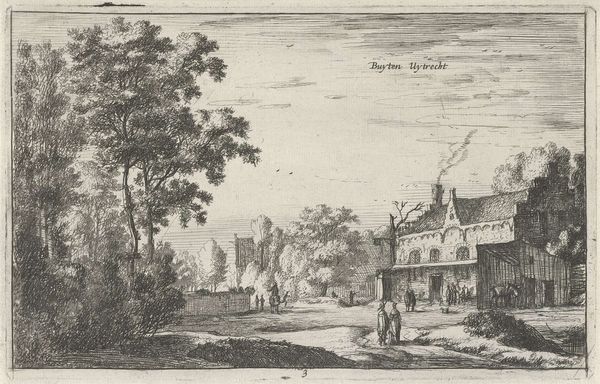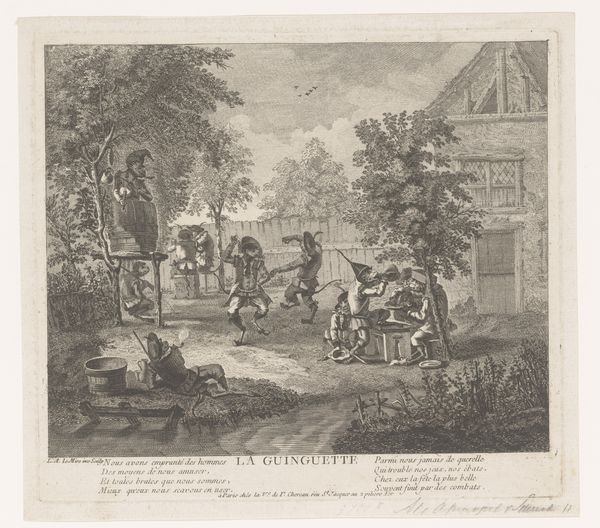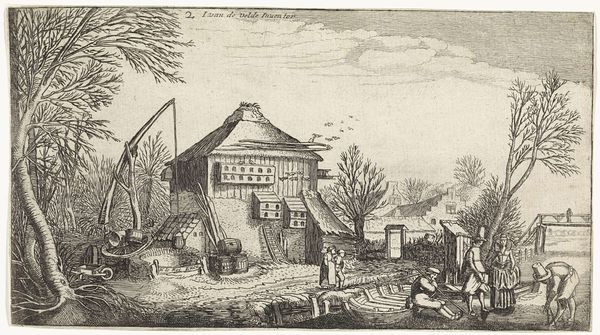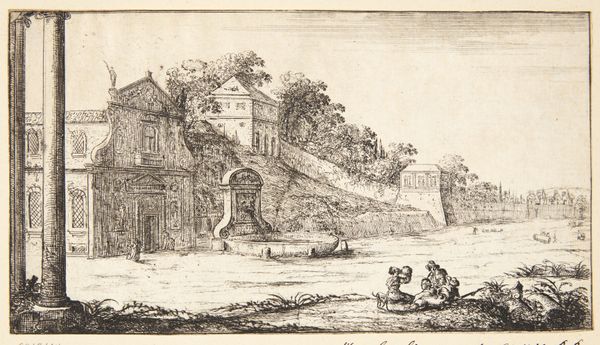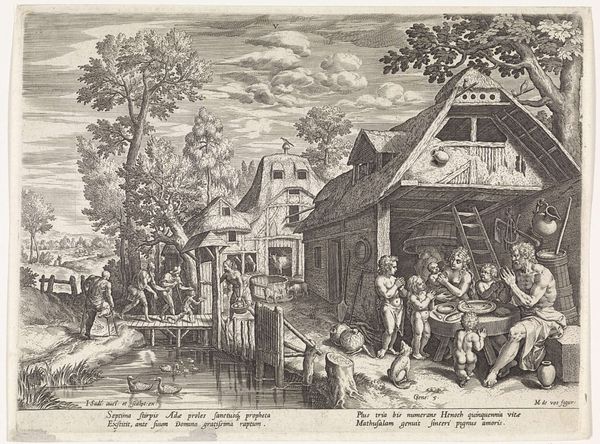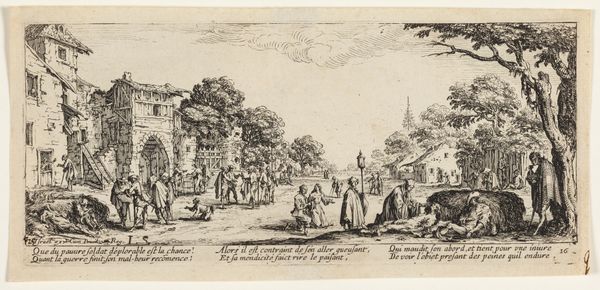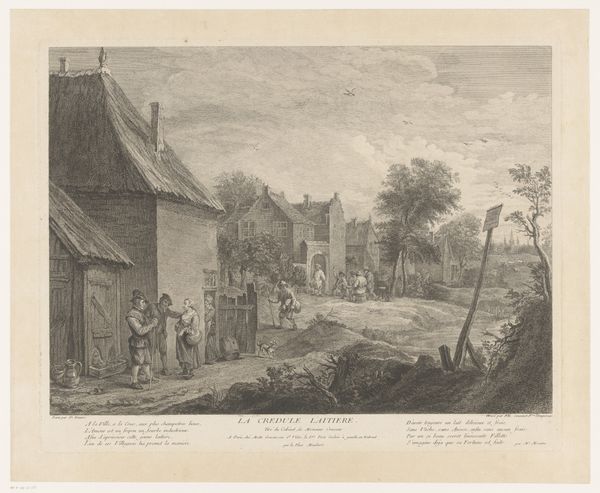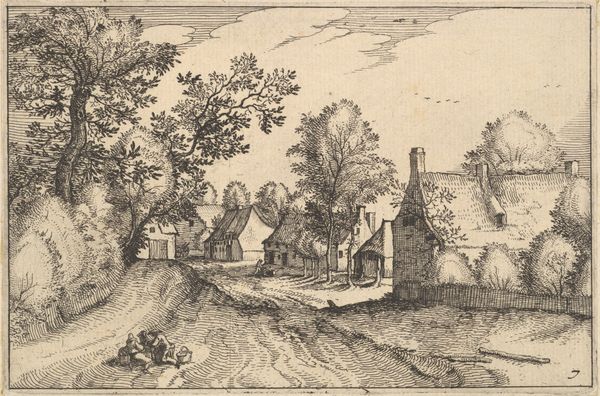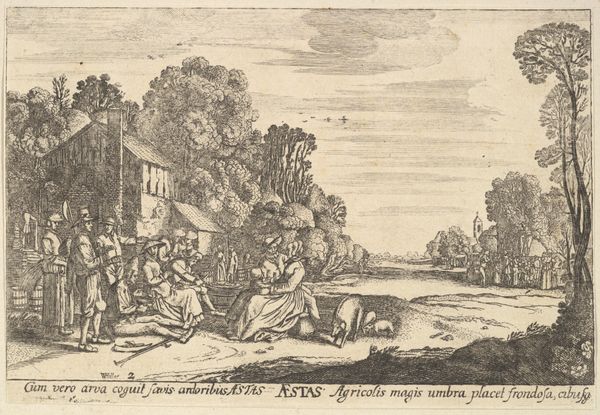
drawing, print, etching, engraving
#
drawing
# print
#
etching
#
landscape
#
house
#
men
#
genre-painting
#
history-painting
#
engraving
Copyright: Public Domain
Curator: Here we have "Ver (Spring)" by Wenceslaus Hollar, an etching dating back to 1629. Editor: Immediately striking. The intricate lines, the depth of field, the contrast! It feels… teeming with life, yet constrained by its own precision. Curator: Absolutely. The composition is meticulously structured, dividing the pictorial space into distinct planes. Notice how the foreground's diagonal leads the eye back into the village scene. Semiotically, this directs our attention from the immediacy of the figures to the broader social context. Editor: And those figures! A cluster engaged in some kind of social… gathering? And there’s implied movement too, further in the distance. Spring, in its symbolic promise of rebirth, often shows up like this, as social engagement after a cold winter. But there's something a bit anxious too, an anticipation. The house looks weathered… fragile. Curator: The textures are remarkably rendered for an etching, achieving an impressive range of tonal values. The cross-hatching is especially effective in creating a sense of volume in the tree and in defining the architectural structure. Hollar’s skill is apparent in the sheer technical virtuosity on display. Editor: And the symbolism... I'm intrigued by the layers here. The people, are they celebrating a rite of passage, something tied to seasonal change, perhaps? Is this secular? Religious? Hard to say. The artist’s visual syntax creates a sense of temporal tension between labor and leisure, perhaps hinting at anxieties tied to work. Curator: An excellent point! And while we cannot say with certainty the context that prompted this landscape with figural elements, our understanding is undoubtedly deepened through its close analysis and the language inscribed on the print: "Rustic people were thus the first free from frost". The line break comes between "Spring" and "Lasciva’s fields leads to flowering dances". These elements further shape its meaning. Editor: Yes, the inscribed text acts as an evocative caption that directs us away from winter into seasonal renewal. Even now, it remains such a resonant artwork. Curator: Indeed, reflecting on both its form and its cultural context, "Ver" proves a rewarding artistic experience.
Comments
No comments
Be the first to comment and join the conversation on the ultimate creative platform.
